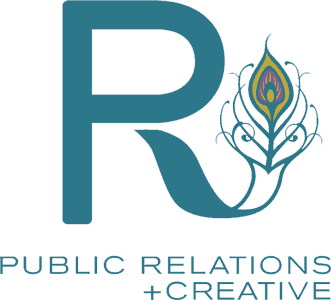R Public Relations Firm
Owned Media Metrics That Matter: Measuring Success in PR Campaigns
In the dynamic landscape of public relations, the metrics used to gauge success have evolved significantly. With the advent of digital media and the proliferation of owned media channels, PR professionals now have an array of metrics at their disposal to measure the effectiveness of their campaigns. In this blog, we'll delve into the owned media metrics that truly matter when evaluating the success of PR campaigns.
Understanding Owned Media
Owned media refers to the channels that a company or organization controls and utilizes to distribute content and engage with its audience. This includes company websites, blogs, social media profiles, email newsletters, and other digital assets. Unlike earned or paid media, it provides brands with complete control over messaging and distribution.

Key Metrics for Owned Media
1. Website Traffic and Engagement
The cornerstone of owned media measurement is website traffic and engagement metrics. Tracking metrics such as unique visitors, page views, time spent on site, and bounce rate provides insights into how effectively your media channels are attracting and retaining audiences. Tools like Google Analytics offer comprehensive data on website performance, allowing PR professionals to assess the impact of their content and messaging.
2. Content Consumption Metrics
Beyond website traffic, it's essential to analyze how audiences are engaging with specific content. Metrics such as the number of blog post views, video watch time, and document downloads offer valuable insights into the effectiveness of your content strategy. By identifying which types of content resonate most with your audience, PR professionals can refine their messaging and optimize future campaigns.
3. Social Media Metrics:
Social media platforms play a pivotal role in owned media strategy, serving as channels for content distribution and audience engagement. Metrics such as likes, shares, comments, and follower growth are indicative of social media performance. Additionally, tracking click-through rates (CTRs) on social media posts provides insights into audience behavior and the effectiveness of call-to-action (CTA) strategies.

4. Email Marketing Metrics:
Email newsletters remain a powerful owned media tool for building and nurturing customer relationships. Metrics such as open rates, click-through rates, and unsubscribe rates offer essential insights into email campaign performance. By segmenting audiences and analyzing engagement metrics, PR professionals can tailor content to specific audience interests and preferences.
5. Search Engine Optimization (SEO) Metrics:
Optimizing owned media content for search engines is crucial for maximizing visibility and organic traffic. Metrics such as keyword rankings, organic search traffic, and backlink profiles provide insights into SEO performance. By continuously monitoring and optimizing SEO metrics, PR professionals can improve the discoverability of their content and drive targeted traffic to owned media channels.
6. Conversion Metrics:
Ultimately, the goal of these media campaigns is to drive desired actions from the audience, whether it's making a purchase, signing up for a newsletter, or downloading a resource. Conversion metrics such as conversion rate, lead generation, and sales attribution are key indicators of campaign success. By tracking conversion metrics alongside engagement metrics, PR professionals can assess the impact of their owned media efforts on business objectives.
Best Practices for Measuring Owned Media Success
Set Clear Objectives:
Before launching a PR campaign, define clear and measurable objectives that align with overall business goals. Whether it's increasing website traffic, generating leads, or driving sales, establishing specific KPIs will guide measurement efforts and ensure accountability.
Use a Balanced Scorecard Approach:
Instead of focusing solely on vanity metrics such as likes and followers, adopt a balanced scorecard approach that incorporates a mix of quantitative and qualitative metrics. By considering metrics related to reach, engagement, conversion, and sentiment, PR professionals can gain a holistic view of campaign performance.

Track Metrics Consistently:
Consistent tracking and monitoring of metrics are essential for identifying trends and measuring progress over time. Establish regular reporting cadences and leverage analytics tools to automate data collection and analysis processes.
Benchmark Against Competitors:
Compare owned media metrics against industry benchmarks and competitors to gain insights into performance relative to peers. Identifying areas of strength and opportunity can inform strategic adjustments and competitive positioning.
In today's digital age, owned media has emerged as a cornerstone of PR strategy, offering brands unprecedented control over content creation and distribution. By leveraging the right metrics and measurement practices, PR professionals can effectively evaluate the success of their owned media campaigns and drive tangible business outcomes. From website traffic and engagement to social media metrics and conversion rates, the key to measuring owned media success lies in adopting a comprehensive and data-driven approach that aligns with overarching business objectives.
From Quiet Days to Headline Plays: PR Professionals’ Tactics for Generating News
In public relations (PR), staying visible and engaging with your audience is crucial, even more so when there seems to be no newsworthy content to share. PR professionals face the unique challenge of generating interest and news in these slow times. Here are several innovative strategies that PR professionals can use to create buzz and maintain their presence in the media landscape, ensuring that their brand or client remains in the public eye, regardless of the news cycle.
Leverage Social Media
Social media platforms offer a fertile ground for PR professionals to generate news when traditional avenues seem barren. Engaging directly with your audience through these channels can transform a slow news day into an opportunity for meaningful interaction.
Consider sharing behind-the-scenes glimpses of your company or client's daily operations, highlighting the human element behind the brand. Initiating live Q&A sessions on platforms like Instagram or Facebook can also drive engagement, allowing you to address audience queries in real-time and showcase your brand's transparency and accessibility.
You can also make current news relevant to your brand. Look for opportunities to share your brand's story within a hot news story. You can capitalize on current events to make a great story that establishes your brand’s value to a mainstream audience. By crafting compelling, interactive content, PR professionals can create their news, keeping the audience engaged and interested even in the absence of conventional news stories.
Create Your Own Events

In the absence of newsworthy happenings, creating your own events can be a game-changer for PR professionals. Organizing webinars, workshops, or virtual meet-ups generates content and positions your brand as a leader in industry conversations. Consider partnering with other brands, influencers, or thought leaders to co-host events, expanding your reach and introducing your audience to fresh perspectives.
These collaborations can lead to newsworthy moments, capturing the attention of media outlets and audiences alike. The buzz created by these events fills the news void and enhances your brand's reputation for innovation and engagement. Highlighting the success stories or key learnings from these events in follow-up communications can keep the momentum going, ensuring your brand remains in the spotlight.
Conduct and Publish Original Research
Original research is a powerful tool for PR professionals seeking to generate news. By conducting studies or surveys relevant to your industry, you can uncover insights that interest your target audience and establish your brand as an authority. This approach requires a commitment to quality and relevance, ensuring the findings offer genuine value. Publishing this research with insightful analysis and conclusions can attract significant media attention.
To maximize reach, consider creating a multi-faceted content campaign around your research findings, including press releases, blog posts, podcasts, and social media content. This amplifies your message and caters to different audience preferences, enhancing engagement and shareability. Original research can set your brand apart, making it a go-to source for insights and elevating your standing in the industry.
PR Professionals Can Create Content

Effective content marketing is crucial for PR professionals who generate news in slow periods. You can maintain visibility and interest by developing engaging, high-quality content that resonates with your audience. This could range from informative blog posts and visually appealing infographics to compelling video series. Incorporating SEO strategies can further enhance the visibility of your content, drawing more traffic to your site. Content marketing helps fill the news void and strengthens your brand's relationship with its audience, establishing a foundation of trust and authority.
Generating news in the absence of newsworthy events is a testament to the creativity and proactivity of PR professionals. By leveraging social media, creating their own events, conducting original research, and utilizing content marketing, PR professionals can ensure their brand or client remains in the public eye. These strategies help navigate slow news periods and strengthen the overall PR strategy, building a more engaged and loyal audience. In the ever-evolving media landscape, staying visible and relevant requires constant innovation. And these tactics offer a roadmap for PR professionals to shine, even when the news seems scarce.
RPR Firm has a team of PR professionals with the skills and experience to help you generate news when there is no news. With more than 11 years of experience, our company helps brands share their stories with cutting-edge technology and tools. To learn more, schedule a free consultation with us today.









